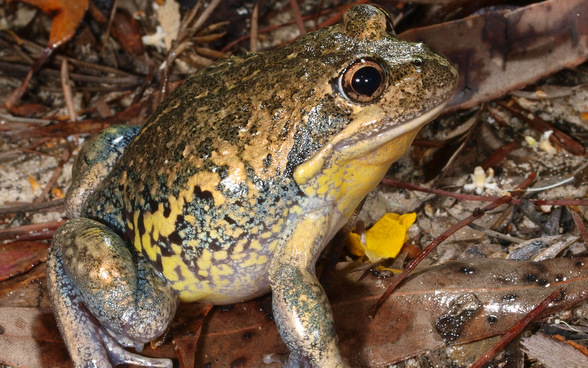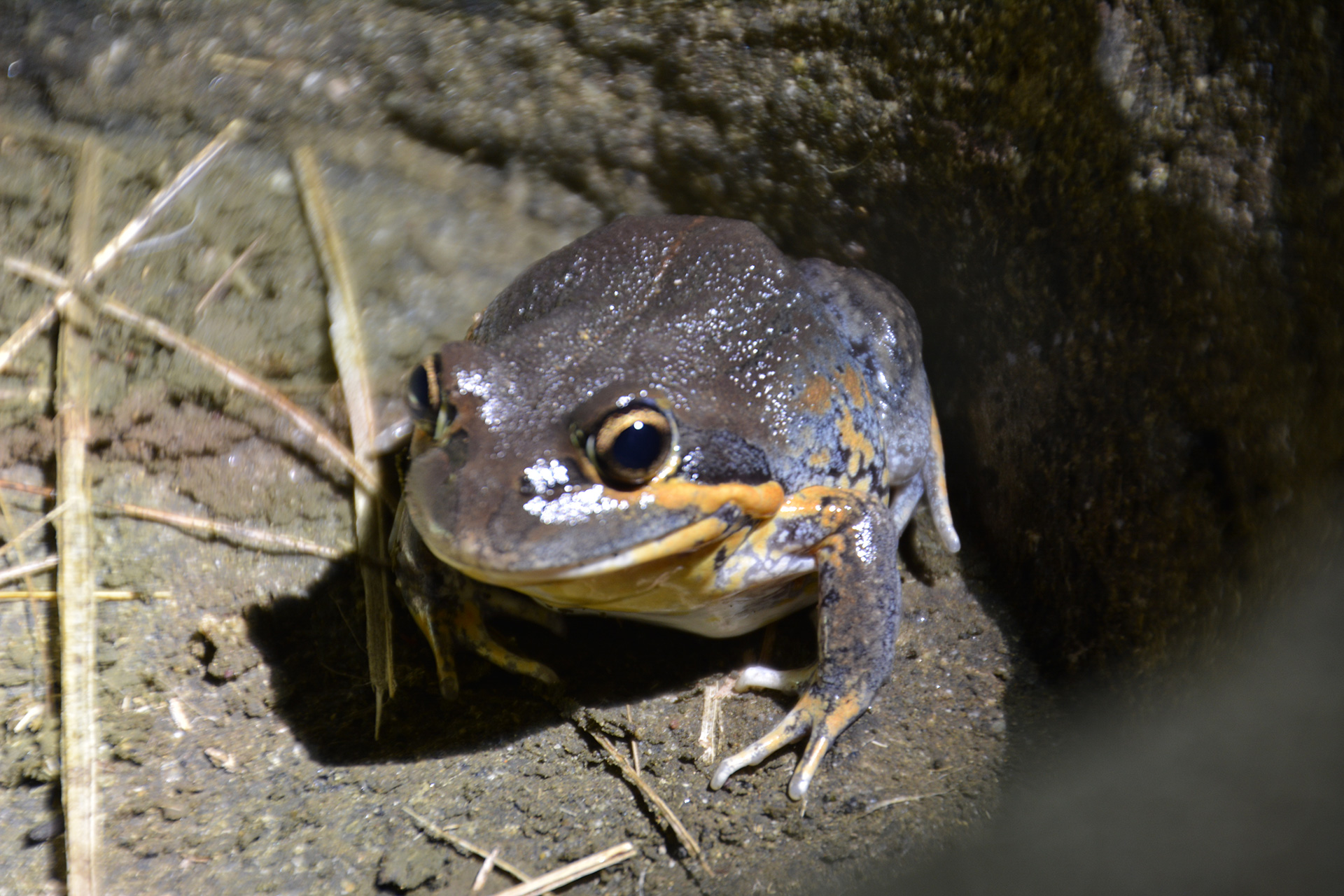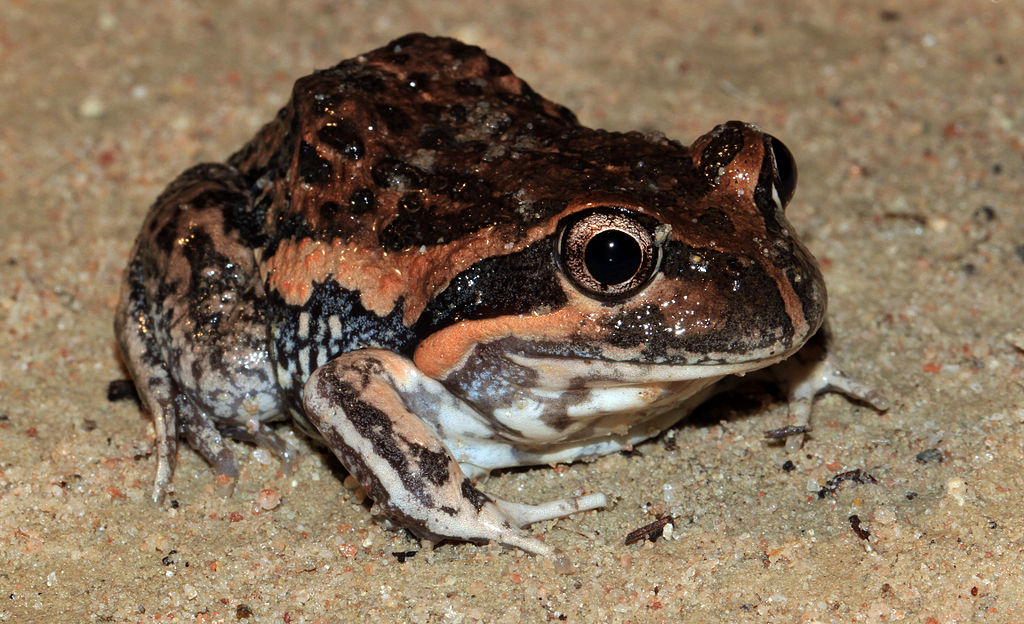Size
5 - 8.5 cm
Behaviour
Call
Males call when in water and concealed by floating vegetation, or less commonly from the water’s edge. When one frog starts to call, others will often join in. Their call is a single “bonk” or “plonk” and is usually repeated every few seconds. Some individuals will produce a rapid series of “bonk-bonk-bonk”.
Listen to the Eastern Banjo Frog call © Nature Sounds/David Stewart
Diet
Small invertebrates, for example flies and other small insects.
Movement
During dry periods it burrows into the ground and waits for rain, after which it emerges to feed and breed.
Breeding
Males call to attract females from August though to April, most intensely after heavy rain. Females lay their eggs in a floating foam of bubbles (often attached to and concealed in vegetation) in the still waters of swamps, streams, dams and ponds.
Field Guide
Improve your identification skills. Download your Eastern Banjo Frog field guide here!





